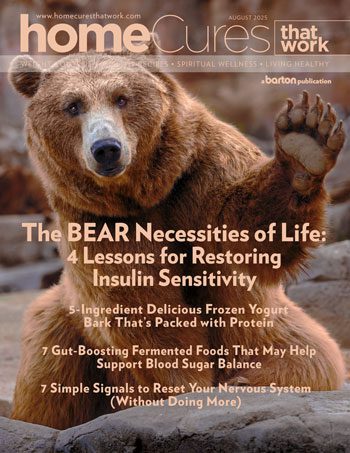5 Vaccination Myths
Exercising Your Right Whether or Not to Vaccinate
Perhaps many reading this article are like me. We’ve grown up during the era of vaccinations and have never experienced any long-term negative complications from a vaccination. But now we’re hearing of a growing movement that is raising serious concerns about the health of vaccinating—especially vaccinating small children.
Why the sudden alarm about vaccinations? Aren’t vaccinations responsible for warding off massive outbreaks of diseases like polio, whooping cough, mumps, measles and rubella?
The big question I’d like to focus on is whether individuals should have the right to choose whether or not to vaccinate themselves and their children. Do we have a moral obligation to vaccinate and be vaccinated? Does the government have the right to tell us who, how often, and against what diseases we must be vaccinated?Let’s look at some of the major issues and then you decide.
Myth #1: Vaccinations Have Staved Off Massive Epidemics
Actually, although that is the widespread belief, it wasn’t the vaccines that brought about the dramatic reduction in these diseases, but improved hygiene, nutrition and sanitation. Polio, whooping cough, measles, mumps and rubella, for instance, were all in radical decline before the vaccinations were developed and administered.[1]
Many who adamantly support extensive immunization fear that non-vaccinated children will infect their children. This makes no sense logically or medically, since the purpose of a vaccine is to protect the individual and the spread of such communicable diseases.
In this regard, some refer to “herd immunity,” arguing that diseases simply can’t spread in a community where a high enough percentage of the population is vaccinated against them. But this is an old, unproven hypothesis that defies logic.[2]
Myth #2: Vaccinations Immunize a Person Against Disease
Everybody knows that by injecting weak or dead viruses, the body develops antibodies. But does this combat and protect you from the real virus? Actually, we now know that this only holds true temporarily—and, not always.
Furthermore, the World Health Organization (WHO) has admitted that “Children under two years of age do not consistently develop immunity following vaccination.” In fact, vaccinating can actually compromise their immune system.[3]
In a recent 2012 whooping cough outbreak in California, doctors discovered that the majority of children who contracted whopping cough had been vaccinated against it!
- In fact, 81% of the children with whooping cough had received the full series of “immunizations” against the disease.
- Another 11% had received only part of the whooping cough regimen.
- Only 8% had not received any whopping cough vaccinations.[4]
A similar 2014 outbreak of the mumps in Ohio revealed the same outcome. Individual infected with mumps included a large population of those vaccinated. Among 28 cases of the mumps, all had been “immunized” against the mumps except for one person.[6] Understanding this, the late Dr. Robert Mendlesohn, MD, in his book, How to Raise a Healthy Child in Spite of Your Doctor, asserted, “vaccinated individuals are 14 times more likely to contract mumps than unvaccinated.”[7]
If you think you are safe with the flu shot, think again. Four Canadian studies released in 2009 demonstrated that a seasonal flu shot increases the probability that one will contract H1N1 flu by 250%![8]
According to the US Centers for Disease Control and Prevention, the effectiveness of the influenza vaccine for the 2014-15 flu season is 19%.[9] In spite of this pathetic performance, the CDC still insists, “Getting a flu vaccine each year is the best way to prevent the flu.”[10] The flu vaccine really does increase your risk for serious pandemic flu illness!
While the flu virus is primarily spread through coughing, sneezing, or touching items contaminated by an infected person, “it is also possible for vaccine strain influenza to be transmitted by persons who have recently received live attenuated influenza virus nasal vaccines.”[11] This holds true for seven days or more following administration of the vaccine.
In other words, it is possible to contract a disease from a person who has been infected with it through immunization. In fact, government pamphlets warn, “Children who have been vaccinated should avoid close contact with people with severely weakened immune systems for around two weeks after being vaccinated.” Vaccine experts also warn that children “May have to stay away from elderly relatives for a few days after vaccination.”[12] The takeaway: the unvaccinated can become infected from the vaccinated.
Another problem is that viruses are constantly mutating. Antibodies developed against one virus will not be effective at warding off its mutant cousins.[13] One wonders whether vaccinating actually assists in the mutation and development of superbugs. Bacterium and viruses may be turning into strains that can no longer be controlled.
So we find that immunizing can actually lead to greater chances of contracting the disease for which one is being inoculated.
Myth #3: Vaccinations Are Safe
According to the pharmaceutical companies’ own fact sheets and disclaimers, vaccinations are brimming with toxins. These include dozens of known chemicals, heavy metals and allergens that we willingly inject into our bloodstream and that of our children.
Some of these chemicals include:
- Formaldehyde (embalming fluid)
- Benzethonium chloride
- Ammonium sulfate
- Phenol-a
- Beta-propiolactone
- Phenoxyethanol
- Potassium chloride, and many others[14]
The heavy metals found in many vaccinations are primarily:
- Aluminum, in one form or another
- Thimerosal, which is nearly 50% mercury.[15]
Currently, there is huge controversy about whether these specific heavy metals administered in vaccines are responsible for the monumental rise in autism and other brain disorders.
A new scientific study demonstrates that mercury-based thimerosal used as a vaccine preservative causes neural damage similar to that in autism patients.[16]
Yet, “The CDC’s Advisory Committee on Immunization Practices (ACIP) recommends that all Americans six months of age or older get a flu shot every year throughout life. The CDC states that babies between six and eight months old should receive two doses of influenza vaccine one month apart.”[17]
But according to Dr. Russell Blaylock, MD, “Multiple vaccines given close together over-stimulate your brain’s immune system and via the mechanism of ‘bystander injury,’ destroy brain cells.”[18]
Doctors Shaw and Tomljenovic explain, “We show that Aluminum-adjuvanted vaccines may be a significant etiological factor in the rising prevalence of ASD. Given that the scientific evidence appears to indicate that vaccine safety is not as firmly established as often believed, it would seem ill advised to exclude pediatric vaccinations as a possible cause of adverse long-term neurodevelopment outcomes, including those associated with autism.”[19]
So isn’t at least one potential answer staring us in the face?
Myth #4: Vaccines Are Allergen Free
Many people are unaware of the problems associated with allergic reactions to vaccine components. Allergic reactions to vaccines is common. They allergens found in many vaccines include:
Each ingredient is cause for alarm. But when mixed together with dozens of chemicals in a serum that is injected directly into the bloodstream, the synergistic effects can be catastrophic.[21] This is quite a burden to saddle the young or old with.
Myth #5: Vaccination Purity
Another reason for concern has to do with vaccine contamination. Each year, vaccines are recalled due to various contamination issues. In 2010, several vaccines were discovered to have
- Pig virus DNA
- DNA fragments from bird leucosis virus
- DNA fragments from a virus similar to monkey retrovirus.[22]
According to the National Vaccine Information Center, “As of November 2013, there have been more than 93,000 reports of reactions, hospitalizations, injuries and deaths following influenza vaccinations made to the federal Vaccine Adverse Events Reporting System (VAERS), including 1,080 related deaths, 8,888 hospitalizations, 1,801 related disabilities and over 1,700 cases of GBS.”[23]
Since 1986, the federal government has paid out over $3 billion to individuals injured by vaccines through the National Vaccine Injury Compensation Fund.[24]
Finally, many vaccines are developed using tissues from aborted human fetuses, and tissues from monkeys, dogs, guinea pigs, chickens, pigs and other animals.[25] Again, many conscientious people have a problem with this and rightly so.
The Bottom Line
Set aside any hint of conspiracy theory or other whacky notions and review the data as objectively as possible. And keep in mind that the large pharmaceutical companies exist primarily to make money, not to heal people. I’m not saying this is good or bad, it’s just the way of business.
The vaccination industry is a money-making venture, driven by the dollar. Shareholders of drug companies want to see profits and these companies cannot stay in business unless they continue to make money. Business decisions are made primarily on the basis of financial viability rather than what’s best for someone’s health.
Remember too that the drug companies are exempt from lawsuits due to alleged problems caused by the vaccinations they create. [26]
Finally, consider that the number of board certified medical doctors, naturopaths, bio-chemists, and other health practitioners is growing who believe we should have the choice whether to vaccinate ourselves and our children.
How about you? Given the information cited above, wouldn’t you like the prerogative to exercise your right whether to vaccinate? Please let your choice be informed and respect the choice of others.



























